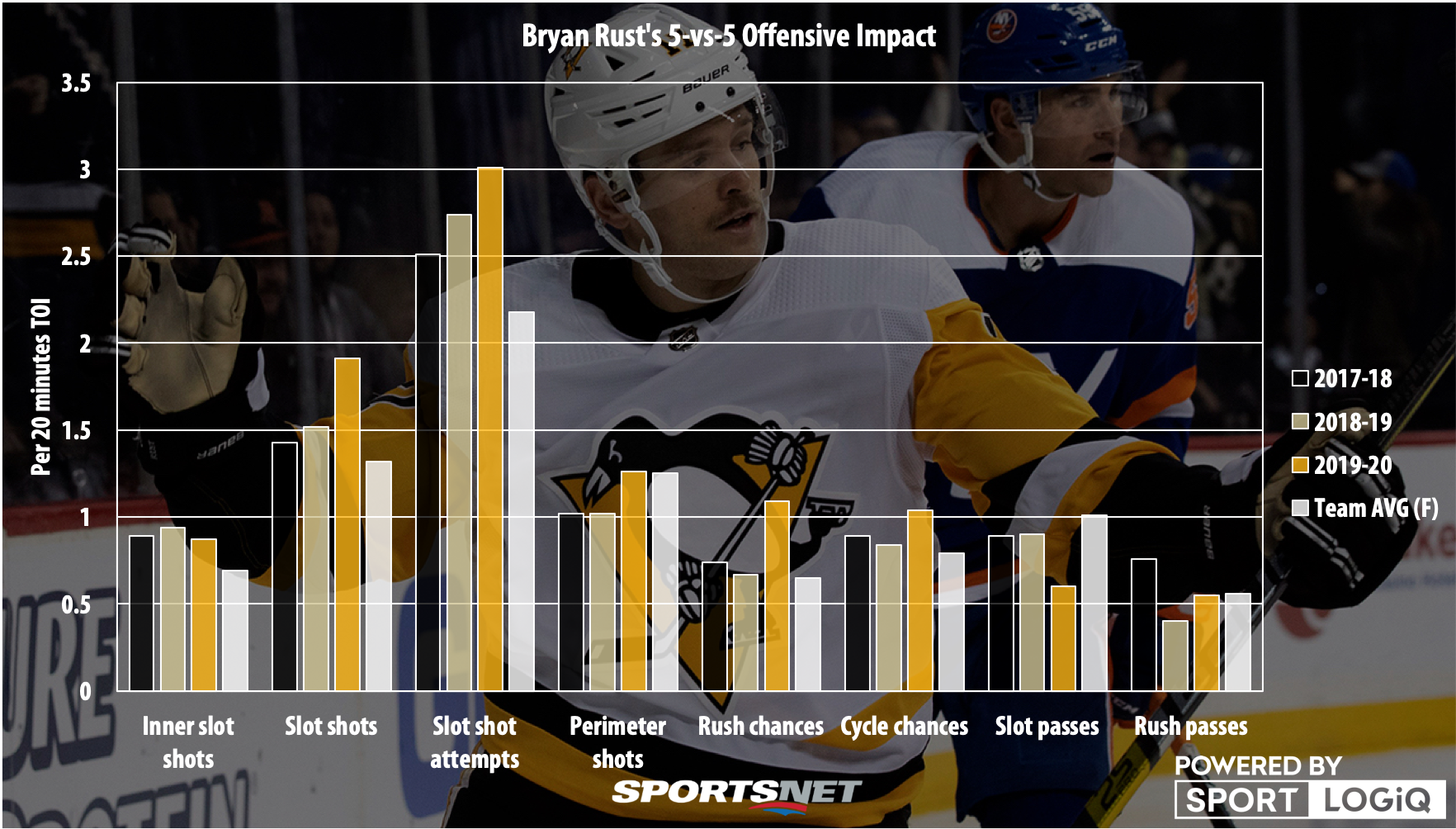Auston Matthews has been on an absolute scoring tear since the beginning of December with 11 goals in just 13 games. It’s an impressive level of performance, in fact over that time he’s almost leading the league in goals per minute played. He’s not though, because someone else has been even more red hot, legendary goal scorer Anthony Duclair.
Hold on a second, weren’t we all told last season that he couldn’t play hockey? Well Duclair has already ripped 21 pucks between those red pipes and into the mesh this season, picking up right where he left off last season after the trade to the Ottawa Senators where he scored eight goals in 21 games.
[snippet id=4748264]
SPOTLIGHT PERFORMANCE
It sort of flew under the radar last season with frequent benchings and public beratings from John Tortorella, but Duclair wasn’t really struggling to score last season with Columbus either, he managed to pot 11 goals in 53 games in a depth role; a 17 goal pace.
That’s nothing compared to the 40+ goal pace he’s on this season, but Duclair has hit 20 goals before and has averaged a pace of 16 goals per 82 games while bouncing up and down lineups and around teams. He isn’t a player who has completely come out of nowhere, but he’s being given trust and big minutes for the first time in a long time.
The question I have is how likely it is that Duclair can continue to find his footing in the NHL and score at a strong pace. Is he an artifact of Ottawa needing someone, anyone to score goals? Or is he a talented player who finally at the age of 24 is getting the opportunity he’s always deserved? Let’s look at how much things have changed from last season to justify his goal pace doubling.

Looking specifically at Duclair’s shooting, we can see that last season he was easily an above average forward at 5-vs-5, getting more shots from closer to the net than most players, and attacking very effectively off the rush.
This season he’s increased his shot volume overall, but the increase to his shots on net from the slot is much more significant than his overall increase to shot attempts from there, which you can look at as Duclair being more accurate with his shot, or he’s been luckier this season in getting his attempts on net.
Curiously, while he’s still been above average off the rush, Duclair is producing less off the rush this season, and less off the cycle as well, which he seems to be compensating for by just getting in closer to the net overall, and shooting more often.
He has also been one of the league’s better players at creating screens for himself this year, so what does all that mean? To me, those are signs of a player who has less help from his team to create offence than he had on a superior offensive team in Columbus last season, so he’s working harder and harder to get those chances.
[snippet id=4167285]
Getting more ice time and working harder has been a nice combination to create this situation for Duclair, but we also have to recognize that the improvements Duclair has made likely aren’t enough to bring him into 40-goal territory, at least not as an expectation going forward.
What we can say though, is that Duclair is undoubtedly good enough to be a goal scorer at this level, and he’s not one-dimensional either. Only Brady Tkachuk has a better inner slot shot differential on the Senators this year than Duclair’s 58.3 per cent, so he’s pushing play in the right direction as well.
Maybe it wasn’t until this season that Duclair had really figured out how to play, but I doubt that.
THE QUESTION
This week when Steve Dangle asked me his question, the immediate thought that jumped into my head was “thank you!” I had been looking for a reason to write about this player for a while now, but hadn’t had the time to fit him in yet. So what did Steve ask?
“So… Bryan Rust… What? How? Who is this guy all of a sudden?”
RIGHT? Don’t get me wrong, I have lots of respect for Rust as a player, he’s been a fixture of the Penguins’ middle six for five seasons now on a team where those types of players are continually shipped out in order to save space under the salary cap and adjust their roster on the fly and stay competitive.
Something about Rust has convinced the Penguins to keep him around over others, and while it may have been the affordability of his contract in part, he’s in the first year of a relatively rich $3.5M AAV contract that lasts three years, so that’s no longer the case.
So far Rust has more than rewarded the Penguins’ willingness to invest in him with a ridiculous 32 points in 25 games, six points shy of his career high in 44 fewer games. But how likely is it that Rust can break out from being a 15 goal, 30-35 point utility player who has spent a not-insignificant amount of time with superstar centres in his career and keep anything close to this level of performance? Let’s look at how much his performance has changed year over year.

Rust has been an above team average offensive contributor for the last three seasons, but you can see that a few things have changed for him.
Contrary to what usually happens when a player experiences a hot shooting streak, Rust has been shooting from further out this season than in the previous two seasons, specifically increasing the number of shots he’s taken from the high slot.
His scoring chances off the rush and off the cycle have both increased, likely a result of spending most of his ice time this season with Evgeni Malkin and Jake Guentzel, but his slot passes are down.
So what is going on here? Rust’s overall performance is definitely better than it has been before by a number of measures, but it looks like the biggest change is that Rust’s role on that line is extremely well defined. He is to go to a certain area of the ice, he’s to join the rush with an excellent transition player like Malkin, and participate in the cycle by staying in the slot; meaning he’s probably not passing into the slot as much.
Having that tightly defined role has played to Rust’s strengths and created the best stretch of production in his career, but at the same time the underlying numbers don’t show us a player who is shooting the lights out and creating a crazy number of chances that would be indicative of a better than a point per game player.
Rust is a good player, but this is one hell of a hot streak, something that can’t be expected to continue.
[relatedlinks]
QUICK HITS
• Speaking of Rust’s excellent linemates, over the last month of games, Malkin leads the league in scoring chances created per 20 minutes played at 5-vs-5 with 12.4. It seems like every time Sidney Crosby is hurt; Malkin finds another level.
• Right behind Malkin is a name not many would expect: Columbus’s Pierre-Luc Dubois. Dubois has really blossomed into a special player over the last couple of years, but he’s still a relative unknown around the league in terms of star players. Dubois’s 28 points in 41 games don’t jump off the stat sheet as a star player, but the process behind the numbers is elite. How Dubois would respond with Columbus losing Artemi Panarin, and the underlying data shows he’s pushing things in the right direction.
• I don’t think any team wants to face the Carolina Hurricanes in the first round of the playoffs. The Metro is tight, but the Hurricanes lead the league in both inner slot shots and slot passes per minute at 5-vs-5. They’re an incredibly dangerous team to deal with.
• There’s lots of reasons why the San Jose Sharks have been such a disappointment this season, but one of the main reasons has been their poor play in the neutral zone. No team turns the puck over more often in the middle of the ice, which is a recipe for disaster on the defensive side, especially if your goaltending is suspect.







